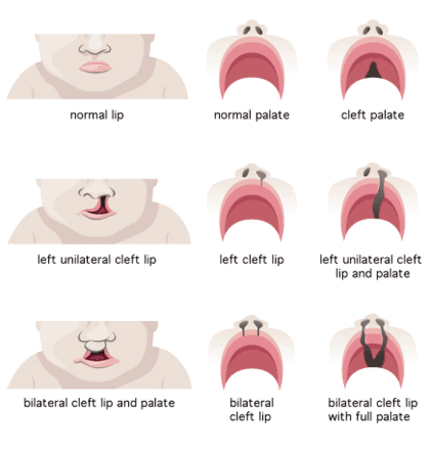Help for children with cleft lip or cleft palate

Cleft lips and cleft palates are some of the most common major birth defects, occurring in about one or two of every 1,000 infants born in the United States each year. An orofacial cleft occurs when parts of the lip or palate do not completely fuse together during the first three months of pregnancy.
A cleft lip may appear as a small notch in the edge of the lip only, extending into the nose, or it may also extend into the gums. A cleft palate may also vary in size, from a defect of the soft palate only to a complete cleft that extends through the hard palate. Because the lips and the palate develop separately, it is possible for a child to be born with a cleft lip only, cleft palate only or both.
A cleft lip may be detected through a prenatal ultrasound; however, diagnosing a cleft palate is more difficult, and it may not be seen. The diagnosis and extent of cleft lip and palate is confirmed by physical examination after the birth of the child.
Critical steps for newborns with cleft lip/palate
- Assess the palate in each infant, especially if the infant is having problems with feeding.
- Access family support to work through grief, loss and adjustment issues.
- Receive feeding education, which is provided by the nurse coordinator. A feeding evaluation is also offered at Mary Bridge Children’s Speech Therapy for infants with cleft lip or palate after the infant is discharged from the hospital.
Feeding for babies with cleft lip or cleft palate
Babies with cleft lip can usually breastfeed or use a regular bottle. With cleft palate, breastfeeding is not possible. Infants cannot create the suction needed to draw milk out of the breast, or regular nipples on bottles. Even a small cleft will prevent proper suction. Families will need bottles and nipples designed for a cleft palate. Help is available for those who plan to breastfeed to begin pumping and arrange for a pump rental.
Contact us
A referral is required for an appointment. For more information, please call 253-403-1559.

How to refer a patient
Referring providers should submit referrals via Epic. For those not on Epic, please fax referrals to 253-864-3939.